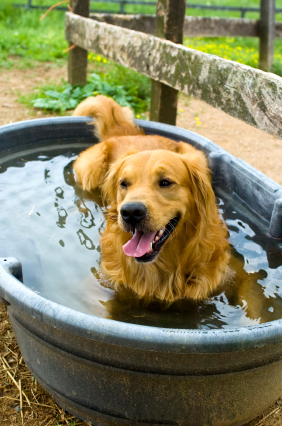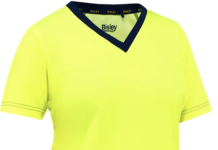Here’s something to think about: Heat Stress is expensive. A 2010 study in the state of Washington found that the average cost of a heat-related illness claim was $3,682. There were 483 of these claims. That adds up quick. Here are some more startling statistics: From 2003-08, the U.S. Department of Labor found that there were not only 177 deaths caused by “Exposure to Environmental Heat” in the private workforce, but also 13,580 missed days of work for the same reason. That’s a lot of lost productivity. Obviously, the safety and well-being of your employees come before any measure of money. That certainly goes without saying. But there’s no denying that preventing heat stress not only is good for the health of your employees, but also for the health of your company’s bottom line.
When you’re out working under the hot sun, there are three factors that can cause heat stress: the environment (temperature, sun, humidity), your work regimen, and your clothing. It’s important to point out that only one of these things is outside of your control. So while you can’t do anything about how hot it is outside, there are several steps you can take to minimize how much that heat effects you — most importantly, how to prevent heat stress.
Heat stress prevention begins with worker training, acclimation, and environmental monitoring. Worker training involves making sure your employees know to take breaks and stay hydrated and wear appropriate clothing and utilizing appropriate cooling products. It gives them the education and knowledge they need to stay safe on a hot day. Acclimation involves getting your employees used to working in the hot conditions by easing them into it — not throwing the most strenuous conditions on them all at once, but starting nice and easy and slowly growing accustomed to the hot work environment so that their bodies can adjust gradually and handle it. This usually takes about two weeks.
The most effective way to prevent heat stress is by using something called high-tech monitors. This is cutting-edge safety equipment and backed by significant research that shows using high-tech monitors can successfully and effectively cut down on incidents of very serious and even fatal heat stress in the workplace.
A quick history of monitors: It used to be that the only way we measured temperature and their effect on working conditions were through thermometers. Then, we realized that humidity also affects the human body’s natural ability to cool. So we developed Temperature and Humidity Meters, but they didn’t provide the complete answer either because they don’t measure the influences of radiant heat, air flow, work rate and clothing. These factors can make a big difference in your body’s ability to tolerate heat.
Years ago, WBGT Monitors (Wet-Bulb Globe Temperature) was introduced. They are still considered to be the gold standard for heat stress monitoring. These portable instruments calculate a WBGT Index that takes all of those previously mentioned factors into consideration — air flow, radiant heat, humidity, temperature, etc. After measuring the work environment with a WBGT Monitor, you can apply the reading to a look-up table from organizations like the U.S. Navy, the American Conference of Governmental Industrial Hygienists, the Electrical Power Research Institute and others, to determine safe work times and/or appropriate regimens for safe work-rest times. The most advanced of these WBGT Monitors have put these lookup tables right into the measuring instruments themselves. It does the work for you — after taking a reading, it determines and displays the appropriate stay times and/or work-rest regimens — so that you have immediate information without delay.
After a great deal of research in recent years, these look-up tables have been expanded to include considerations regarding clothing, since the type of clothing worn on a hot day can create a micro-environment for the worker. These factors are also now taken into account, so that stay times and work-rest regimens have been developed based on various clothing types and work rates to make sure that the workers are wearing the appropriate clothing and workwear to help prevent heat-related illnesses.
There are other types of helpful monitors which can be used to prevent heat stress. Stationary Ambient Heat Stress Monitoring Systems perform continuous surveillance of a facility’s environment and gives real-time information to workers so that they can quickly and effectively intervene if there is an impending heat stress incident that needs to be avoided. This system is especially important and useful in work environments where the conditions or workers might change throughout the day, week, month or season.
Another effective tool for preventing heat stress is the use of Personal Heat Stress Monitors and Self Alert Sensors. This attacks the sources of heat stress on the individual level. Since the effects of the work environment (temperature, humidity, etc) affect different people in different ways and in differing levels of seriousness, these options are great to consider because they are the exact opposite of a one-size-fits-all approach. It does this through monitoring a worker’s core temperature, and an alarm goes off if the employee’s vital signs move above a certain predetermined point.
Lastly, there are outside resources that workers can use to help protect themselves from heat-related injuries. OSHA has recently launched a mobile app to help with heat safety. By utilizing the above articles listed, including this mobile app from OSHA, you have a higher likelihood to beat the heat.
All of these different systems are effective in their own way, and some are better than others in certain situations. No one method is best for all, it depends on the employees involved and the work being done. Decide what the best option is for your company and implement a monitoring system to keep your employees safe — for their benefit and yours.




